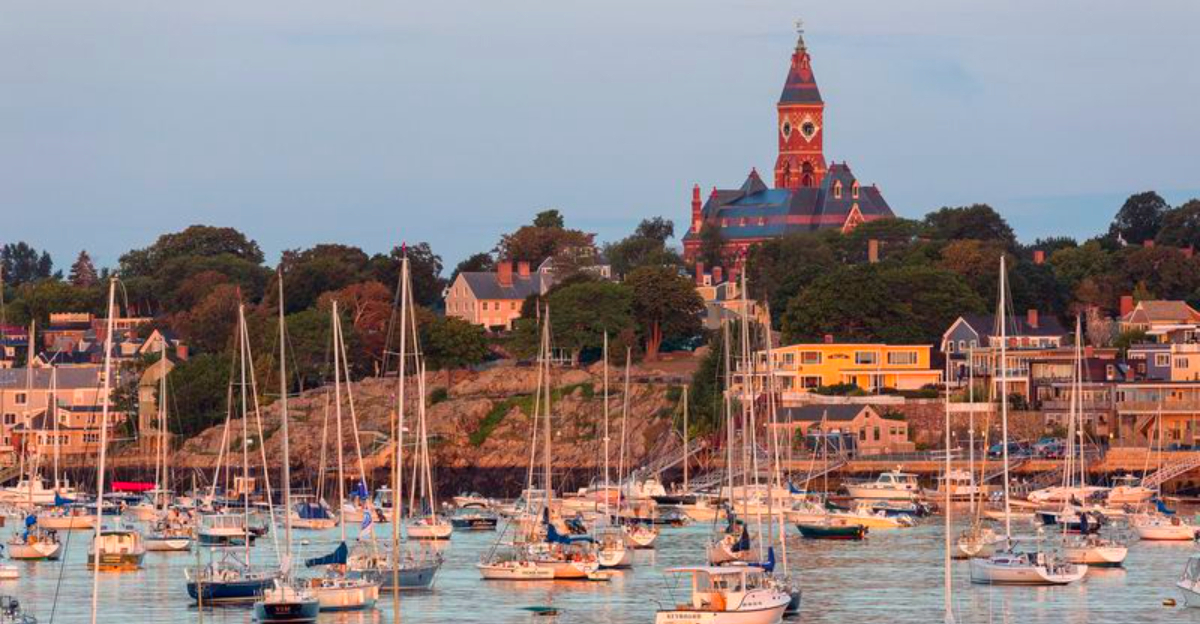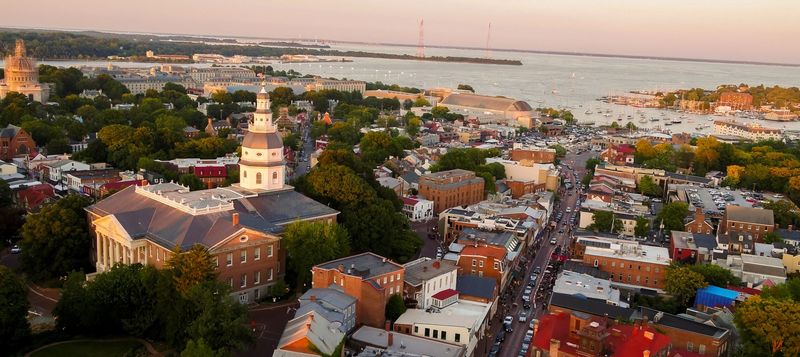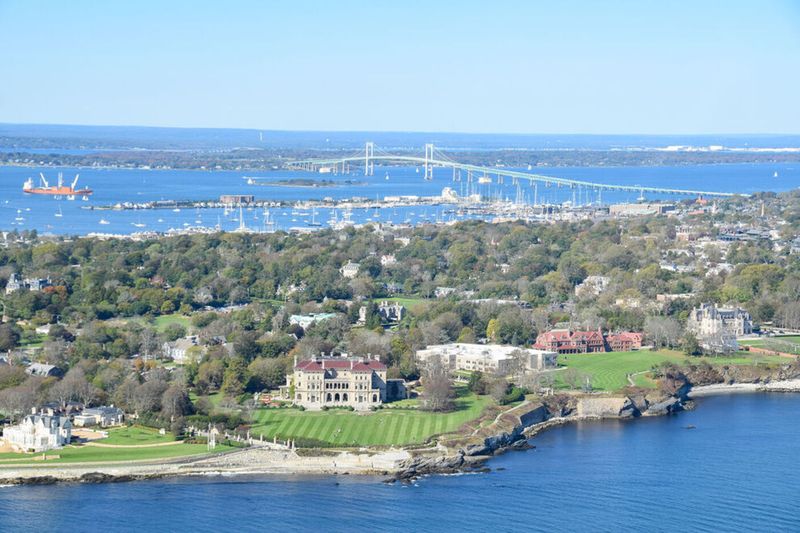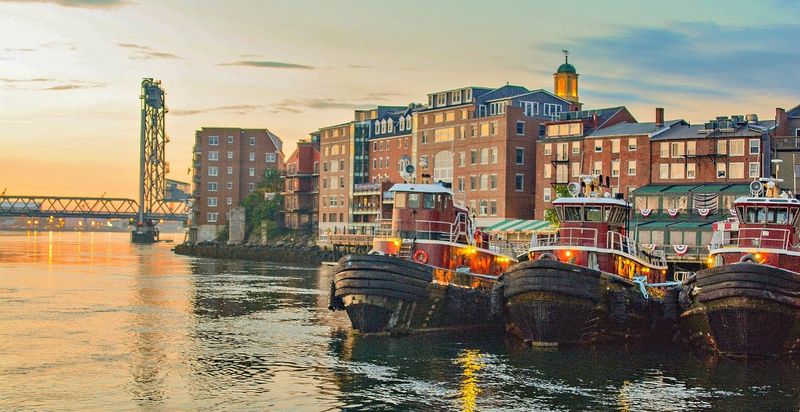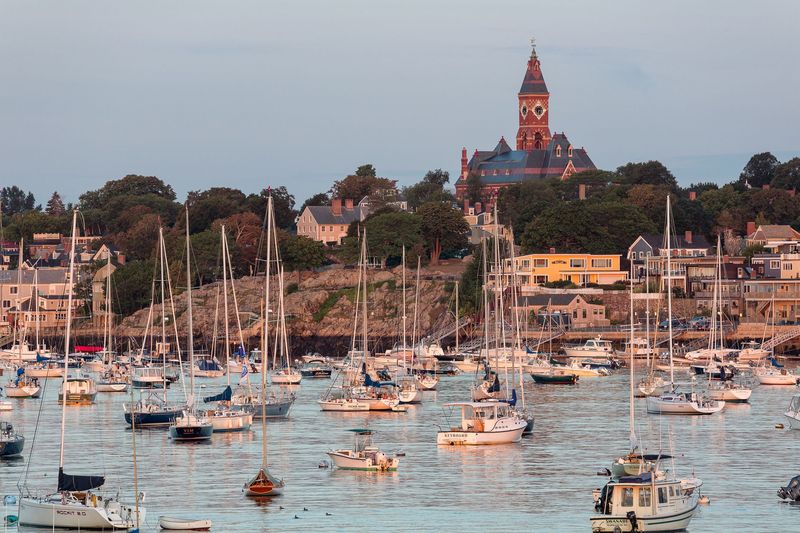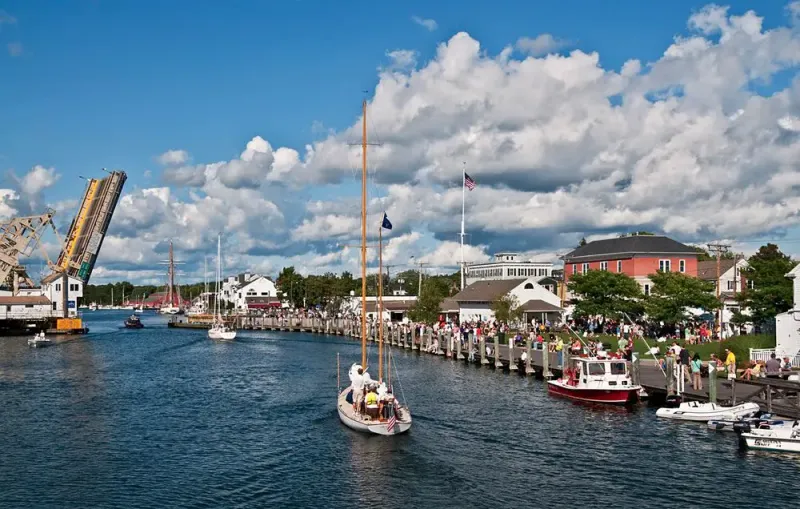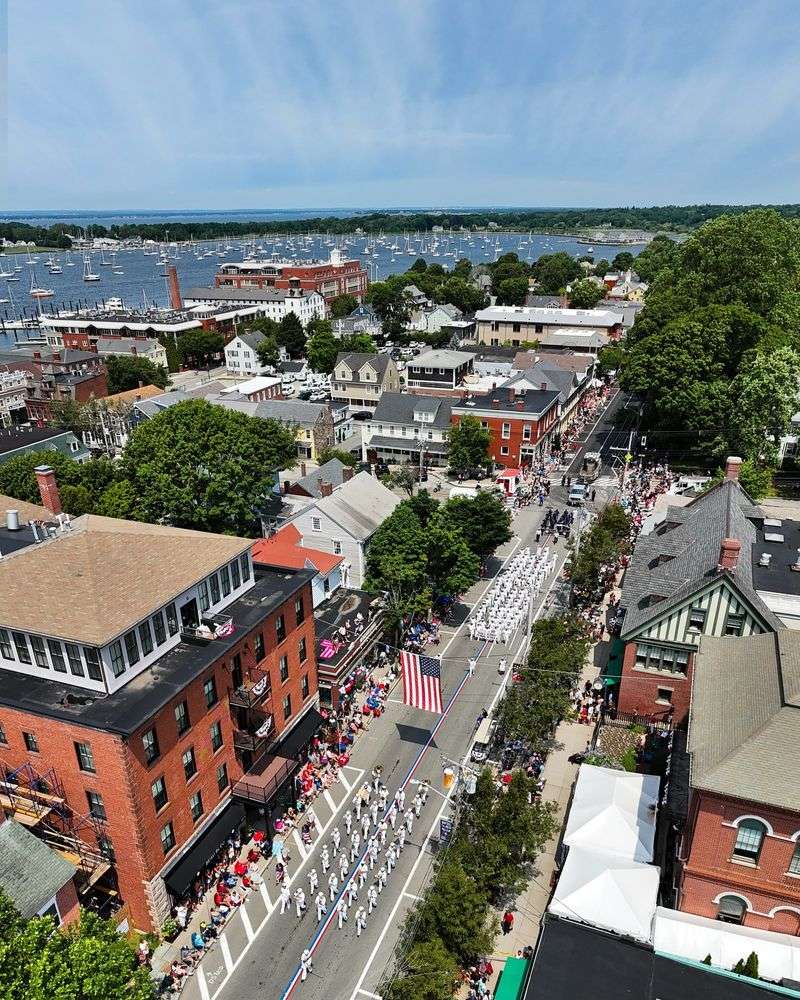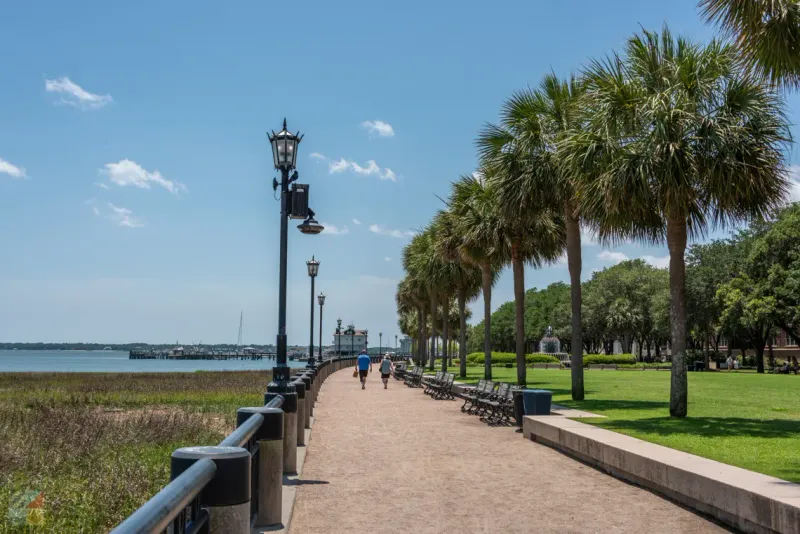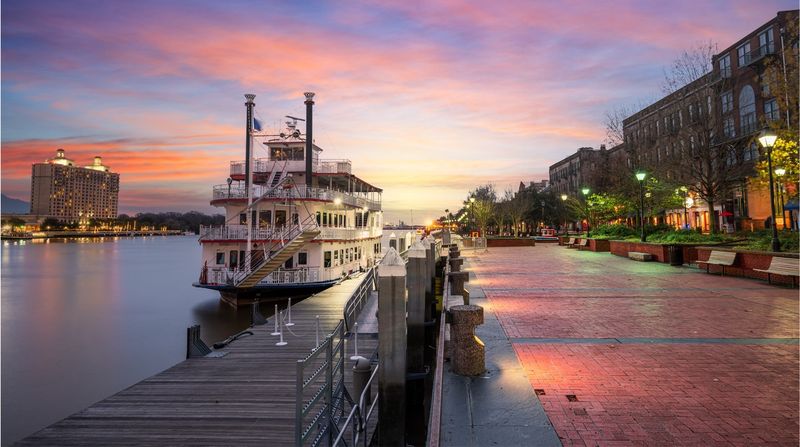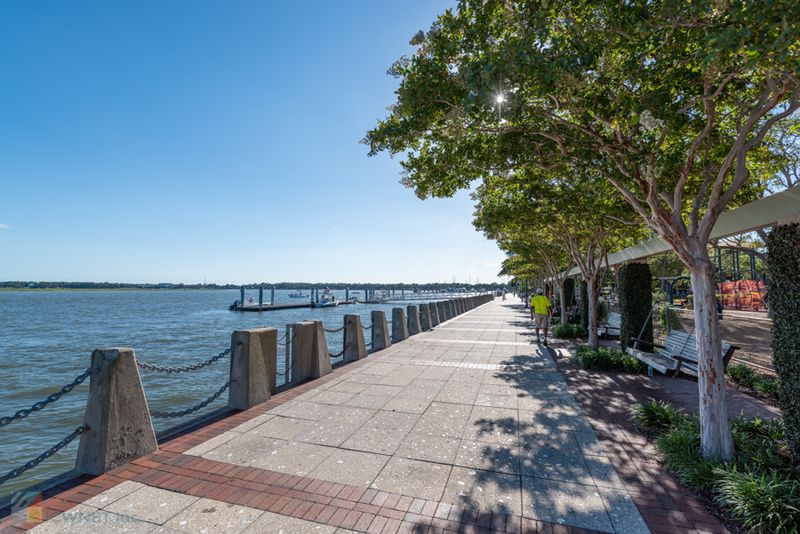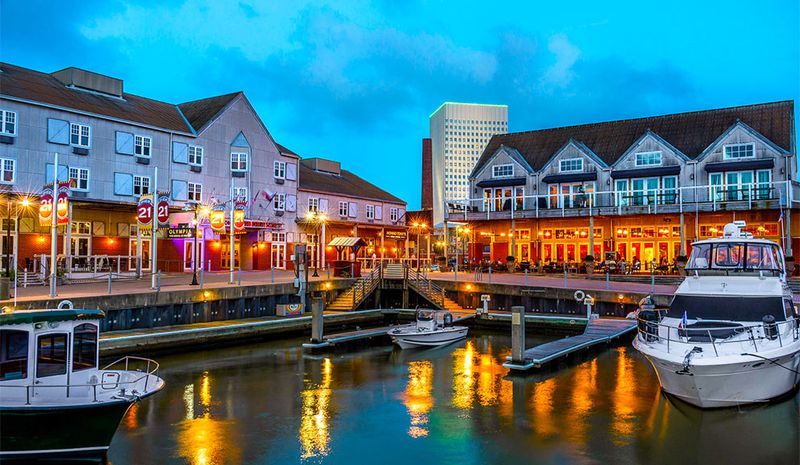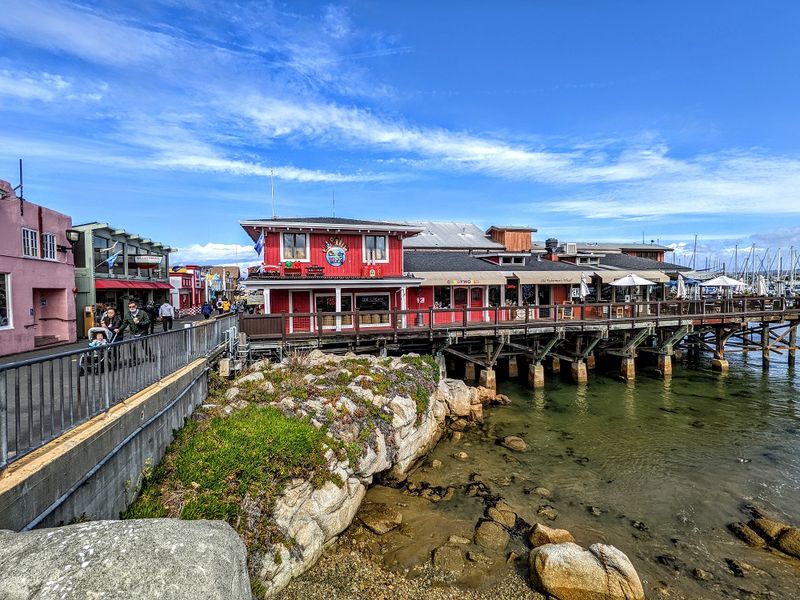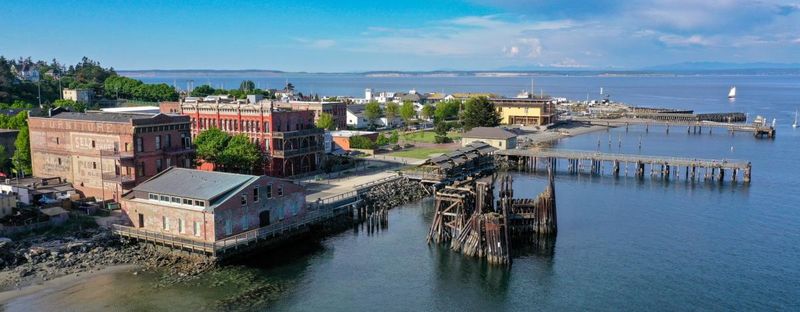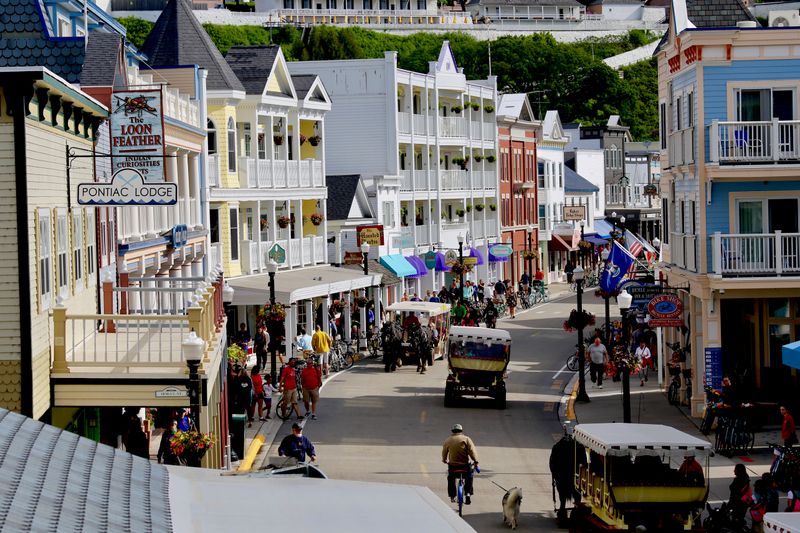There’s something magical about harbor towns that makes them perfect for lazy weekend exploration. Fresh sea breezes, historic waterfronts, and charming streets filled with local shops create an atmosphere you won’t find anywhere else. From the rocky coast of Maine to the sun-drenched shores of California, America’s harbor towns offer incredible spots to wander, relax, and soak in coastal culture without rushing through your day.
1. Annapolis, Maryland
City Dock has anchored this colonial capital since the 1700s, earning the nickname “Ego Alley” for all the showy boats that cruise through. Brick sidewalks wind past sailboat shops, crab shacks, and ice cream stands where locals and visitors mingle. You can spend hours watching crews prep their vessels or just sitting on a bench with a crab cake in hand.
The streets radiating from the harbor are lined with 18th-century buildings that now house boutiques and galleries. Naval Academy midshipmen in uniform add to the town’s unique character. Everything feels walkable, relaxed, and steeped in American history without being stuffy or overdone.
2. Old Town Alexandria, Virginia
Red-brick sidewalks guide you through one of the nation’s best-preserved colonial districts right along the Potomac. King Street slopes gently down to a reimagined waterfront promenade where you can watch river traffic drift by. Boutique windows display everything from handmade jewelry to vintage maps, making window-shopping an adventure in itself.
Museums tucked into historic homes tell stories of George Washington and early America. The whole district feels like a living history book, but with modern coffee shops and farm-to-table restaurants mixed in. It’s easy to lose track of time wandering these charming blocks, especially on sunny Saturday mornings.
3. Fell’s Point (Baltimore, Maryland)
Cobblestones click under your shoes as you explore streets that shipbuilders walked nearly 300 years ago. This National Register Historic District wraps around Baltimore’s harbor, mixing old-world charm with a vibrant modern scene. Colorful row houses lean close together, their stoops perfect for people-watching with a local brew.
The promenade hugging the water gives you unbeatable harbor views and connects you to maritime museums and quirky shops. Live music spills from taverns that have served sailors for centuries. Every corner reveals another layer of history, from tall ships to tiny cafes tucked into centuries-old buildings.
4. Newport, Rhode Island
Working wharves and colonial streets create a harbor scene that feels both elegant and authentic. The Harbor Walk loops around the waterfront, linking neighborhoods, pocket parks, and some of America’s most famous historic homes. Sailboats bob in the marina while seagulls call overhead, creating a soundtrack that’s purely coastal New England.
You can circle the entire harbor on foot, discovering hidden viewpoints and waterfront benches along the way. North and South routes offer different perspectives, from bustling commercial docks to quiet residential stretches. Pack comfortable shoes because you’ll want to explore every corner of this legendary sailing town.
5. Portland’s Old Port, Maine
Nineteenth-century brick warehouses line cobblestone lanes that were made for wandering, not driving. The compact waterfront district packs incredible character into just a few walkable blocks. Fishing boats still unload their catch at working piers, reminding you this isn’t just a tourist attraction but a real working harbor.
Art galleries share space with lobster shacks, and microbreweries occupy buildings that once stored cod and lumber. The salty air mixes with the smell of fresh-baked bread from corner bakeries. It’s the kind of place where you can spend an entire afternoon and still discover something new around the next corner.
6. Portsmouth, New Hampshire
Four centuries of maritime history come alive in this compact port that’s incredibly easy to explore on foot. Market Square buzzes with activity, while the working tugboat waterfront reminds you Portsmouth still earns its living from the sea. Prescott Park spreads green lawns right to the water’s edge, perfect for picnics with a harbor view.
The whole downtown forms a natural circuit that takes you past colonial homes, quirky shops, and waterfront restaurants. Drawbridges still rise to let boats through, stopping traffic and giving everyone a moment to watch. Everything feels accessible, friendly, and genuinely lived-in rather than preserved in amber.
7. Salem, Massachusetts (Derby Wharf & waterfront)
America’s first National Historic Site preserves the long wharves where merchant ships once loaded China trade goods. You can walk the entire length of Derby Wharf out to a small light station, with harbor water lapping on both sides. The maritime streets surrounding the wharves tell stories of sea captains, spice traders, and the city’s golden age of sail.
Historic buildings line the waterfront in tidy rows, many now housing museums and visitor centers. The whole area is compact enough to cover in an afternoon but rich enough in history to fill days. It’s a refreshing change from Salem’s witch-trial tourism, focusing instead on its incredible seafaring heritage.
8. Marblehead, Massachusetts
Winding streets tumble down to one of New England’s most picturesque harbors, framed by one of Massachusetts’ largest colonial historic districts. Shore paths lead you past weathered rocks and classic New England homes to Fort Sewall, where Revolutionary War cannons still point seaward. Hundreds of sailboats crowd the protected harbor, creating a forest of masts that sway with the tide.
The town feels genuinely authentic, with fishermen mending nets alongside weekend sailors prepping their boats. Narrow lanes weren’t designed for cars, making walking the natural way to explore. Every turn reveals another postcard view, whether it’s a colonial doorway or a sunset over the harbor.
9. Rockport, Massachusetts (Bearskin Neck)
A skinny finger of land juts into the harbor, packed with tiny shops, galleries, and seafood shacks that lean over the water. Bearskin Neck got its unusual name from a bear hide once dried here, and today it’s one of New England’s most charming car-free zones. Water surrounds you on both sides as you wander, with harbor views giving way to open bay vistas.
At the tip sits “Motif No. 1,” the red fishing shack that’s probably America’s most-painted building. Artists still set up easels along the waterfront, capturing the same scenes that have inspired painters for generations. The whole peninsula takes maybe twenty minutes to walk end-to-end, but you’ll want to linger much longer.
10. Mystic, Connecticut
The Seaport Museum recreates an entire 19th-century coastal village where you can board tall ships and watch craftspeople practice traditional maritime trades. Beyond the museum, the town itself spreads along both sides of the Mystic River, connected by a drawbridge that still opens for boat traffic. Riverfront paths make it easy to explore without ever getting in a car.
Shops and restaurants occupy buildings that actually served sea captains and shipbuilders generations ago. The whole area feels purposefully walkable, with sidewalks leading from the museum to downtown and beyond. It’s like stepping into a maritime time capsule, but with modern amenities and excellent seafood around every corner.
11. Bristol, Rhode Island
Planned in the 17th century, this seaport still follows its original street grid running down to a breezy harbor. Thames Street forms the spine of the waterfront historic district, lined with colonial-era homes and buildings that now house cafes and antique shops. The town claims to host America’s oldest Fourth of July parade, and patriotic stripes still mark the center line of the main street.
A harborfront stroll offers views across Narragansett Bay, with benches perfectly positioned for watching sailboats tack across the water. Everything feels pleasantly small-scale and manageable, perfect for a leisurely afternoon. The combination of preserved history and active waterfront makes Bristol feel both timeless and very much alive.
12. Charleston, South Carolina (Historic District & Waterfront Park)
Landmark-designated streets draped in Spanish moss lead you down to a palm-lined park built on former wharves. The famous pineapple fountain anchors Waterfront Park, where locals and visitors alike come to catch harbor breezes and watch container ships glide past. Wide pathways and plenty of benches make this an ideal spot for a slow, contemplative stroll.
The historic district surrounding the waterfront showcases some of America’s finest preserved architecture, from rainbow row to grand antebellum homes. Horse-drawn carriages clip-clop past, but walking lets you notice details like ironwork gates and hidden garden glimpses. The whole area invites you to slow down, breathe deep, and savor Southern coastal charm at its finest.
13. Savannah, Georgia (River Street)
Granite-and-cobblestone quays from the 1700s create a promenade that feels wonderfully rough-edged and authentic. Cotton warehouses that once stored cargo from around the world now house restaurants, galleries, and candy shops where you can watch pralines being made. The Savannah River flows just feet away, with massive cargo ships passing so close you can read their names.
Steps and ramps connect River Street to the bluff-top historic district, letting you explore multiple levels of the city. Street performers, artists, and the occasional horse-drawn carriage add to the lively atmosphere. It’s touristy, sure, but in the best possible way, celebrating rather than hiding the city’s working-port heritage.
14. Beaufort, South Carolina
Henry C. Chambers Waterfront Park puts swings right along the promenade, inviting you to relax and watch shrimp boats and pleasure craft navigate the Intracoastal Waterway. Live oaks draped with Spanish moss frame views of the marina and historic district beyond. The flat, easy pathway makes this one of the South’s most accessible waterfront strolls.
Beaufort’s historic district spreads out just behind the park, with antebellum homes that have starred in countless movies. Everything feels manageable and unhurried, perfect for a weekend escape from busier coastal destinations. The combination of natural beauty, maritime activity, and preserved architecture creates a uniquely Lowcountry experience you won’t find anywhere else.
15. St. Augustine, Florida
America’s oldest city pairs a palm-shaded bayfront promenade with the imposing Castillo de San Marcos, a 17th-century Spanish fortress that’s guarded Matanzas Bay for over 300 years. Walking the waterfront takes you from the old fort through parks and past historic markers telling stories of conquistadors, pirates, and colonial settlers. The bay sparkles beside you while ancient coquina walls rise on the other side.
Beyond the bayfront, narrow streets lined with Spanish colonial buildings beg to be explored on foot. Everything is compact and walkable, from the fort to the Plaza de la Constitución. It’s a rare chance to stroll through genuine Spanish colonial America.
16. Galveston, Texas (The Strand & Pier 21)
Victorian commercial palaces line The Strand, a National Historic Landmark district just steps from the harbor. These beautifully restored buildings once made Galveston the “Wall Street of the South,” and today they house everything from candy shops to maritime museums. Pier 21 anchors the harbor end, where you can tour tall ships and learn about the port’s role in Texas history.
The whole district is flat, walkable, and protected from summer sun by building awnings and covered sidewalks. Palm trees and sea breezes remind you this is tropical Texas, different from anywhere else in the state. It’s easy to spend a whole day wandering these historic blocks without ever feeling rushed or overwhelmed.
17. Monterey, California (Old Fisherman’s Wharf)
A historic wharf stretches into Monterey Bay, lined with seafood restaurants where you can watch sea lions bark and beg below the docks. The bayfront trail connects the wharf to downtown, giving you a walking route that showcases both maritime history and natural beauty. Lookout points along the way offer chances to spot otters, pelicans, and migrating whales depending on the season.
Museums and historic buildings dot the route, telling stories of sardine canneries and John Steinbeck’s Cannery Row. Everything feels authentically California coastal, from the fresh seafood to the laid-back vibe. It’s touristy but genuinely charming, with enough variety to keep you interested for hours of waterfront wandering.
18. Port Townsend, Washington
Victorian brick buildings march along the waterfront while ornate mansions climb the hillside above, creating one of the West Coast’s most distinctive seaport profiles. The entire downtown sits within a compact, walkable grid that’s remained largely unchanged since the 1880s. You can explore waterfront shops, then climb staircases to the bluff-top residential area for completely different views and architecture.
The town expected to become a major Pacific port but got bypassed, which ironically preserved its Victorian character. Today that makes it perfect for weekend strolling, with maritime museums, galleries, and cafes occupying buildings that once served sea captains. Mountain and water views frame every street, making even a simple walk feel spectacular.
19. Astoria, Oregon
Riverwalks trace the Columbia River through one of the West’s oldest port towns, where Victorian homes and commercial buildings create a backdrop straight from the 1800s. Maritime museums tell stories of fur traders, salmon canneries, and the treacherous river bar that claimed countless ships. The whole downtown forms a very walkable loop that takes you from riverfront to hillside and back.
Astoria’s working-port character remains intact, with fishing boats and tugboats still active in the harbor. Steep streets climb from the waterfront to residential neighborhoods with stunning river views. It’s a real town that happens to be incredibly historic and walkable, not a preserved tourist attraction, which makes exploring feel authentic and rewarding.
20. Mackinac Island, Michigan
Cars have been banned since 1898, making this Great Lakes port uniquely peaceful and perfectly walkable. Horse-drawn carriages and bicycles provide the only wheeled transport, while ferries bring visitors to a harbor that’s changed little in over a century. Downtown streets lined with Victorian buildings, fudge shops, and historic sites can be explored entirely on foot without ever dodging traffic.
The whole island is a National Historic Landmark, with preserved forts and homes from the fur-trading era. Lake Huron surrounds you, and the famous Grand Hotel overlooks it all from its hilltop perch. It’s like stepping back to the 1890s, when Great Lakes resorts were America’s summer playgrounds and leisurely strolling was the main entertainment.
